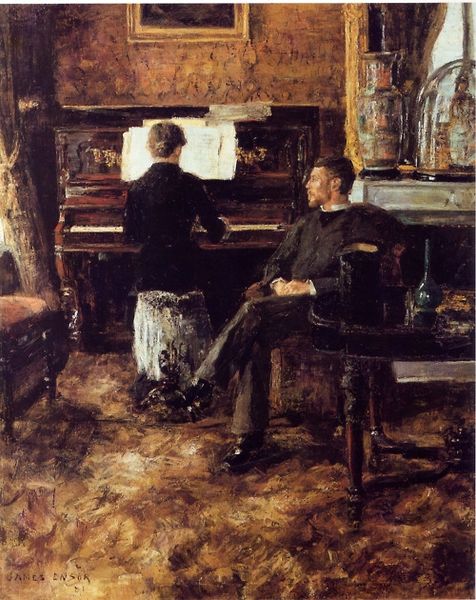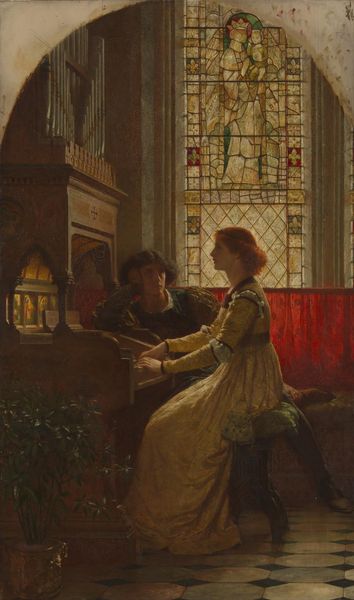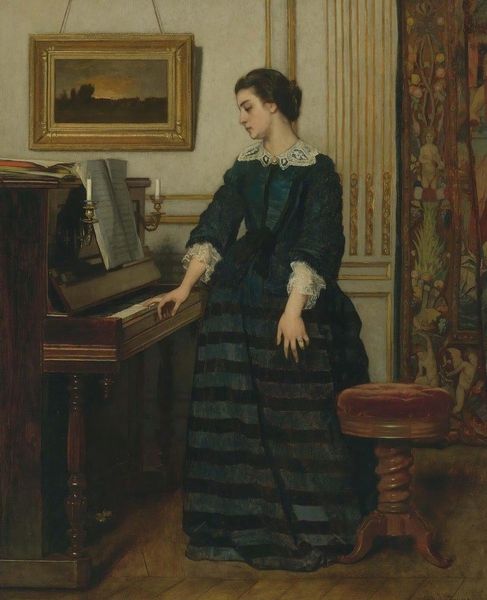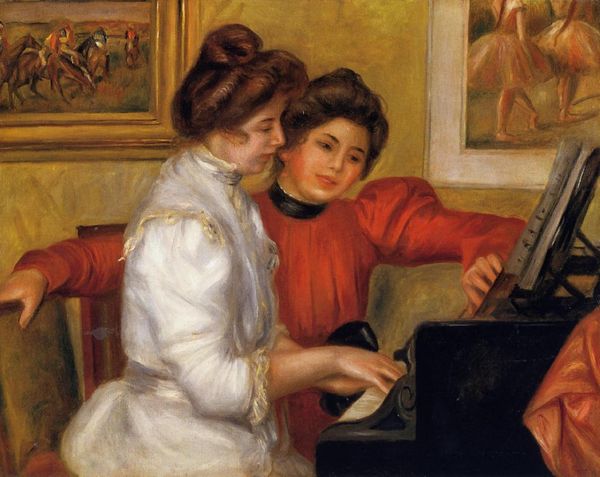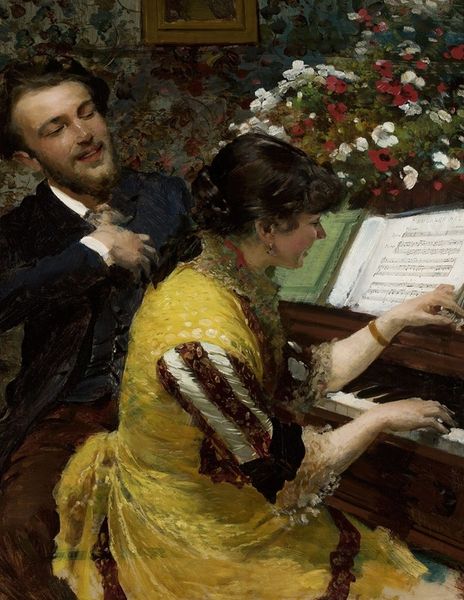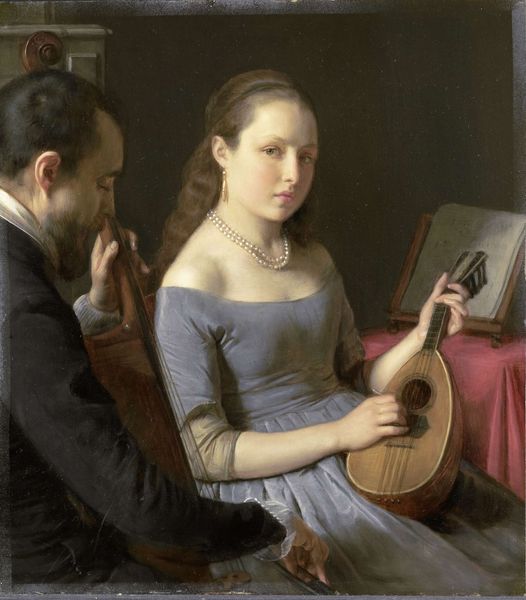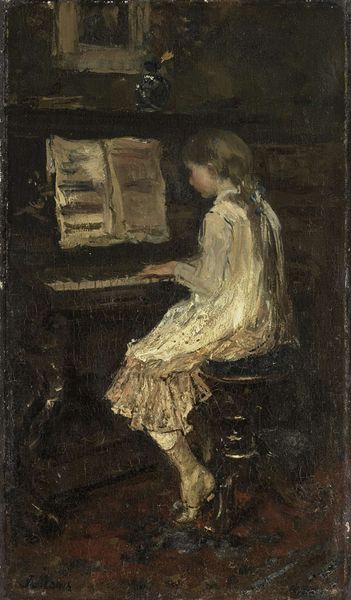
Copyright: Public Domain: Artvee
Editor: Here we have Santiago Rusiñol's "A Romance," painted in 1894. The artist employs oil on canvas to depict a woman playing piano, while a man looks on. The subdued palette and quiet scene create a mood of serene contemplation. What strikes you most about this work? Curator: The most captivating element, to me, lies within the interplay of gazes and gestures. Notice how the man’s hand props his head, his eyes fixed upon the pianist. His gaze and posture create a very specific relationship that evokes the concept of shared inspiration. Editor: Inspiration? Curator: Absolutely. What could the open musical score symbolize, coupled with the man's pose? Perhaps they are co-creating, in a sense. One is actively producing the melody, while the other provides silent support, intellectual or emotional fuel. The piano itself becomes a stage for their intimate connection. Editor: That’s an interesting way to look at it; I was so focused on the quiet domesticity. The interior space is very evocative, yet it's merely a backdrop. The focus is decidedly on the individuals. Curator: Indeed, Rusiñol uses this familiar setting to amplify the power of human connection. What feelings or meanings are drawn out when we look at scenes that portray everyday life elevated by such an intricate human connection? Do they trigger nostalgia? Yearning? Curiosity? Editor: It’s definitely got me thinking about the unspoken narratives embedded in the symbols we often overlook. Thanks! Curator: A painting like this can open new ways to think about our emotional landscapes; so much is often contained in silent moments.
Comments
No comments
Be the first to comment and join the conversation on the ultimate creative platform.


